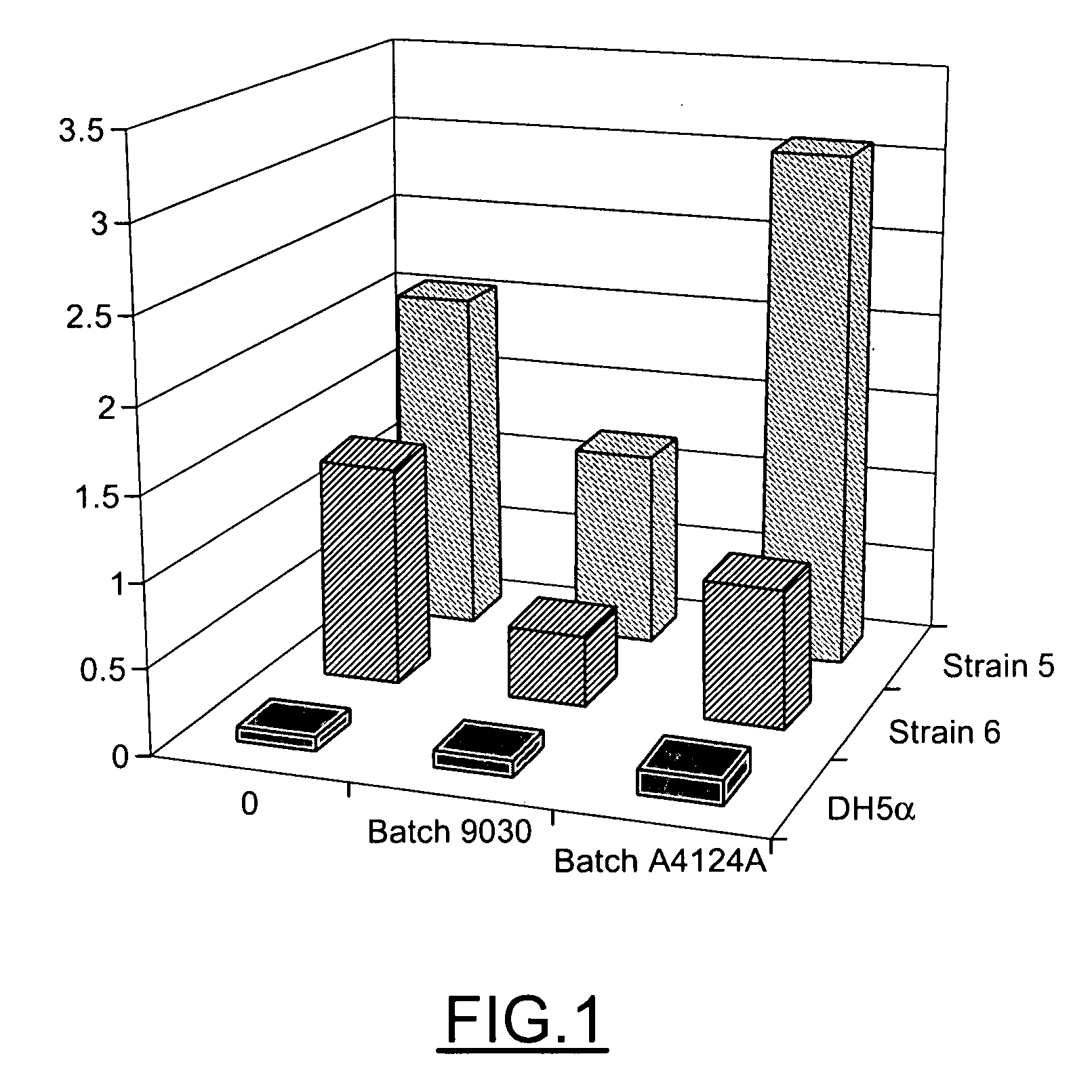American cranberry extract and its use
a technology of cranberry extract and cranberry juice, which is applied in the field of extracts, can solve the problems of rare undesirable effects, diarrhea and gastrointestinal pain, and harmful effects, and achieves the effects of reducing the number of people, and improving the quality of li
- Summary
- Abstract
- Description
- Claims
- Application Information
AI Technical Summary
Benefits of technology
Problems solved by technology
Method used
Image
Examples
example 1
Process for Producing the AFCANN9030 Extract According to the Invention
[0045]American cranberries were placed in solution in an aqueous phase in an amount of one volume of berries per 5 volumes of water. After grinding and solid-liquid separation by decantation at a temperature of 25° C., ethyl acetate is added in an amount of 5 volumes of acetate per one volume of cranberry in an aqueous phase, at a temperature of 20° C., a pH of 4.5, under a pressure of 1 atm, and then the two phases obtained are separated. Dehydration is then performed under a reduced pressure of 0.1 to 0.5 atm, at a temperature of 30 to 40° C., and then a second dehydration at a pressure of 0.9 to 1.5 atm and a temperature of 145° C.
[0046]The AFCANN9030 product obtained is a purple powder.
example 2
Assay of Proanthocyanidins in the AFCANN9030 Extract Obtained
[0047]The Bate-Smith method modified by Porter for the assay of proanthocyanidins was used (Bate-Smith E. C. Phytochemistry, 1973, 12, pp 907-912 and Porter. L. J., & al., Phytochemistry, 1986, 25, 223-230).
[0048]The assay reaction is performed in two stages. In a first instance, the flavan-3-ol polymers are hydrolyzed in a butanol-HCl medium. The hydrolysis is complete and releases monomers of the catechin and epicatechin type. The second assay step consists in oxidizing these monomers under the action of FeIII. The oxidation product is cyanidin and is quantified using a spectrophotometer at 541 nm.
[0049]The Bate-Smith reagent is prepared by mixing 500 mL of HCl at the concentration of 35%, 500 mL of n-butanol and 150 mg of Fe2(SO4)3.
[0050]100 mg of American cranberry extract are dissolved in 100 mL of the mixture of demineralized water and ethanol 1 / 1 by weight. 2 mL of this solution are mixed with 6 mL of Bate-Smith rea...
example 3
Characterization of the Extract of Example 1 (AFCANN9030)
[0054]
Extract of example 1% of proanthocyanidins eq procyanidin C130.5%% TPP eq catechin (UV 280 nm)17.3%% flavanols eq rutin (UV 354 nm) 2.4%% flavanols eq quercetin (UV 354 nm) 1.4%Fructose (batch 3808001) 24.4 mg / gGlucose (batch 3808001)110.8 mg / gSucrose (batch 3808001)NDTotal dry residue97.5%Protein (N * 6.25) Dumas 2.7%Fatty substances by hydrolysis Inorganic matter 2.4%Total dietary fiber13.5%eq: equivalentTPP: total polyphenols
PUM
| Property | Measurement | Unit |
|---|---|---|
| diameter | aaaaa | aaaaa |
| concentrations | aaaaa | aaaaa |
| concentrations | aaaaa | aaaaa |
Abstract
Description
Claims
Application Information
 Login to View More
Login to View More - R&D
- Intellectual Property
- Life Sciences
- Materials
- Tech Scout
- Unparalleled Data Quality
- Higher Quality Content
- 60% Fewer Hallucinations
Browse by: Latest US Patents, China's latest patents, Technical Efficacy Thesaurus, Application Domain, Technology Topic, Popular Technical Reports.
© 2025 PatSnap. All rights reserved.Legal|Privacy policy|Modern Slavery Act Transparency Statement|Sitemap|About US| Contact US: help@patsnap.com


